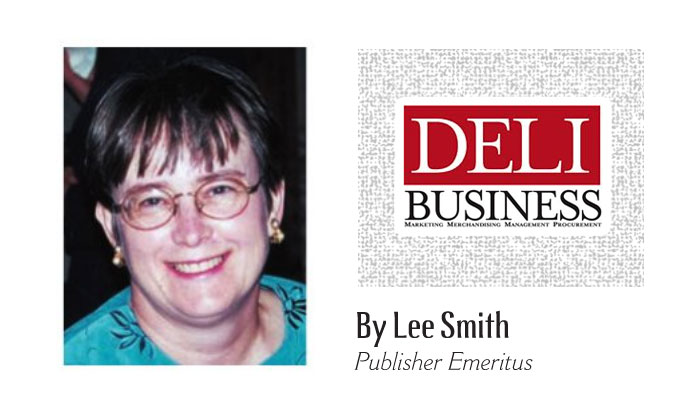Managing During High Inflation
October 1, 2022 | 3 min to read
In the tumultuous 1980s, with inflation nearing 14% and mortgage rates hitting 22%, the writer began their management career at Kings Super Markets. They discovered that traditional productivity metrics faltered under inflation, prompting Kings to revamp labor analysis. By reallocating hours based on store-specific variables rather than sales, they minimized inflation's impact. A critical takeaway emerged: declining customer counts signal danger, as once loyal shoppers can shift their habits permanently. Retailers must adapt to maintain profitability amid economic shifts.

It was during 1980s that inflation was close to 14%. During this time, I also got my first mortgage on a condo in Englewood, NJ, and my interest rate was 22%. At the same time, I had just gotten my first management assignment with Kings Super Markets as a productivity and labor manager. I had just finished a two-year management training program, and inflation was wreaking havoc with everything from prices changes to scheduling to gross profits margins. There were three main areas of profitability that were affected: gross profit margins, labor hours and customer counts. Notice sales is not one of the critical areas because during inflationary times, sales will inevitably go up.
Kings was one of the more progressive companies, and it recognized that the current productivity and labor guidelines were not going to work. Hence, my new job. I was to review all store labor and adjust everything from the number of hours a store and department were budgeted to delivery schedules and distribution of labor. I was hated, but I learned how to manage productivity. To this day, I remember how many flats of cherries can be packed out in an hour–125, to be exact.
Kings recognized the inherent dangers of using formulas based on scheduled hours as a percentage of sales during an inflationary economy. Instead, they hired a company to do a time and labor analysis, measuring every function in the store based on fixed hours and variable functions. There were no computers to aid in the analysis; instead there were four to six very thick binders with formulas and time requirements. For an in-depth analysis, there were two accountants to work the calculations by hand. Each task had both a fixed and variable component. For example, regardless of how busy a store was, the amount of time to open the door first thing in the morning and turn off the alarm was fixed. When it came to packing out, there was a fixed element for opening the cooler door, but the rest was variable based on the number of cases and the type of products to be packed out. Baby food took longer to pack out than big paper, for example. By scheduling based on an individual store’s circumstances and allowing hours based on tonnage rather than sales, the affect of inflation was minimized.
Gross profit percentage is the number by which most departments live and die by. Directors will scream margins, regardless of how out of whack a price becomes. For example, a product retails for $10 and has a 50% gross profit margin. Cost of goods increases by $2 and keeping the current gross profit margin, the retail price would increase $4. Instead of a 20% increase due to inflation, the customer ends up with a 40% increase. Labor hours that were based on sales would increase dramatically, yet the tonnage processed would remain the same.
The danger with the above scenario is that sales look terrific and gross profit margins are intact and meeting budgeted percentages. In fact, the numbers will look great, even if customer counts are going down and labor increasing. Tonnage may well be decreasing from the result of fewer customers, alternate purchases or split shopping. Fewer customers or lowered purchases per customer would be covered up by inflation, and labor costs get out of hand.
Assuming sales and gross profit percentages are acceptable, the key number to focus on is customer counts. If customer counts are falling, a retailer is in a dangerous position. Gaining a loyal customer is difficult and takes time and promotional dollars. Customers don’t easily change shopping patterns in times of stress; however, once gone, they are very difficult to get back. For example, if a customer did all their grocery shopping with one store and then decided to shop in two stores, it may be a permanent decision. Maybe one store is the preferred option for meat and specialty items, while another store is shopped for its low prices.
Inflation always ends or, at the very least, slows down, often dramatically. Slowing down the economy is painful, and if a retailer has been riding high due to inflation, the fall can be disastrous. Of course, inflation has its upsides, too. People often flock back to supermarkets, club stores and discounters, while cutting back on eating out. If they are not eating out as much, customers may buy more luxury items to make up for the missing pleasures of fine dining. It is up to retailers to keep costs under control, and the smart retailer is also helping customers find options to offset high prices. Maybe it is displaying recipes for soups or salads; maybe it is pointing out less expensive cuts of meat; maybe it is introducing an expanded line of lunch meats; and maybe it is displaying cooking aids, such as bread machines and air fryers.
4 of 7 article in DeliBusiness Oct/Nov 2022

